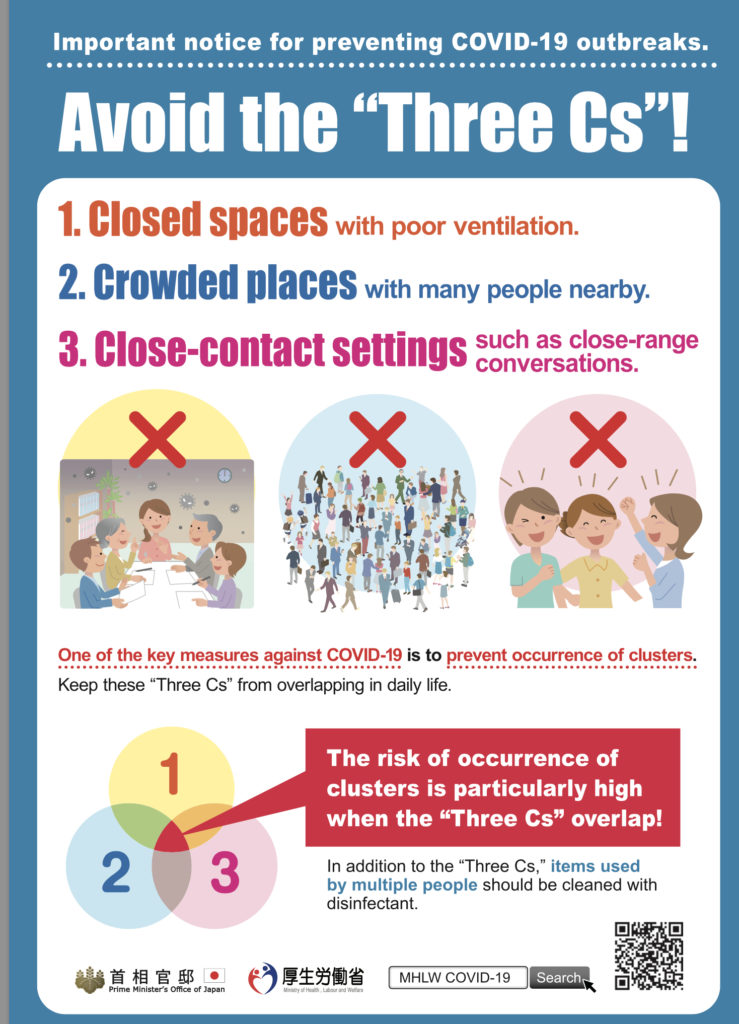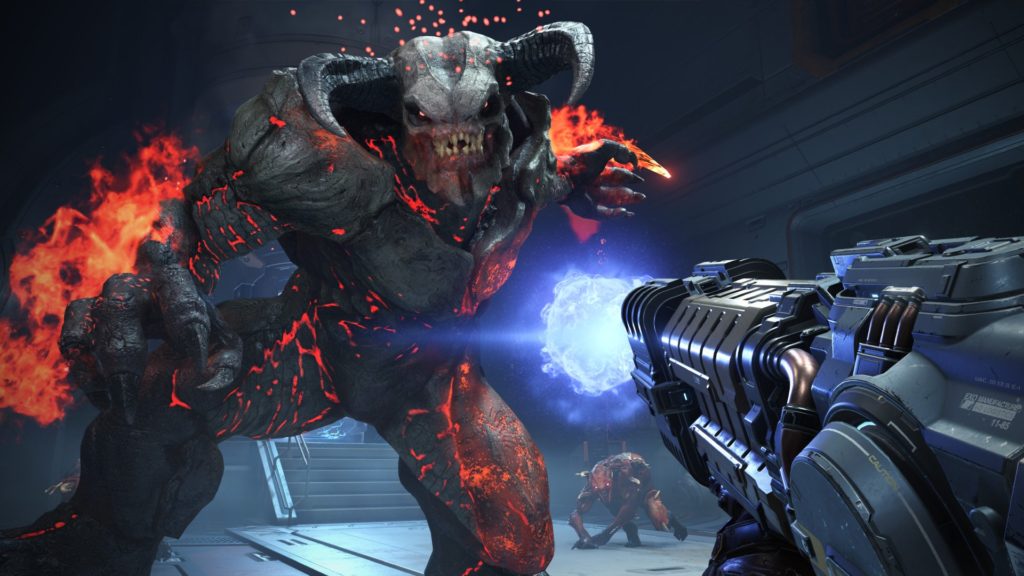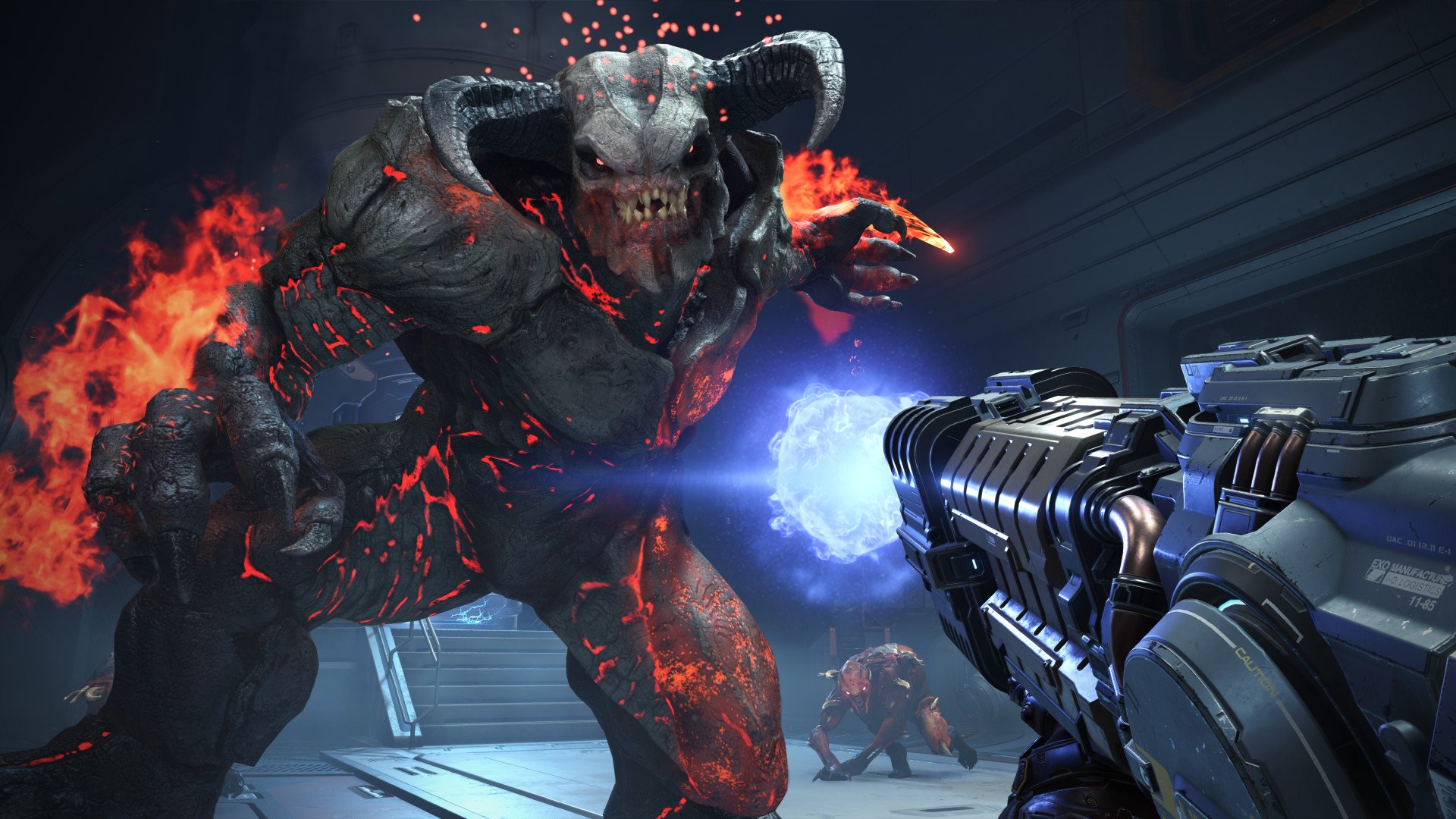The whole world is somewhat baffled by how Japan is handling the coronavirus aka COVID19 aka Sars-CoV-2. The Diamond Princess debacle in which inept Japanese officials turned a cruise ship into a floating incubator for the virus did not bode well. Early on in the crisis, several politicians from the ruling Liberal Democratic Party expressed what was close to delight about the coronavirus disaster, stating that it would finally justify changing Japan’s constitution to a new one that gave the Prime Minister sweeping powers.
Japan has infamously under-tested, turning away most people who were not displaying already full-blown symptoms of coronavirus induced illness-–a fever over 37.5 degrees for four days, loss of sense of taste and smell, had been in contact someone diagnosed with the virus etc.– and has been extremely stingy in releasing information. Some suspect that Japan is hiding coronavirus cases and deaths in pneumonia statistics. Possible. Let’s assume that’s not true for the time being.
The Ministry of Health, which managed to get their own workers and medical staff infected on the Diamond Princess and then refused to test them, sending them back to work, where they infected others–doesn’t inspire confidence. The best they have done seems to be to warn people about the Three Cs (in Japanese 3の密. 密閉・密集・密接): closed spaces, crowds and close contact. Miraculously, avoiding an overlap of these three should keep you safe—until it doesn’t.

Despite having the first cases of coronavirus in January, the number of deaths in Japan remains very low, 108 today (April 12th) out of a nation of 126 million people
Yet infection rates are rising rapidly. The so-called lockdown that is supposed to reduce them is poorly planned, at best. It would appear that the Abe government cares more about saving face than saving lives.
This week I wrote a piece for the Asia Times– TB vaccines offers hope in Covid-19 war –about studies that show a correlation between low numbers of deaths in countries that had a universal tuberculosis vaccination program for decades–and coronavirus. The vaccine is called BCG (Bacillus Calmette-Guerin). Infection rates also appear to be strongly impacted positively by the vaccine. The vaccine is nearly a hundred years old. It was developed by French physicians and biologists Léon Charles Albert Calmette and Jean-Marie Camille Guérin in the 1900s and first successfully tested in 1921. Some theorize that when the vaccine is given to very young children and/or infants, that it creates ‘attained immunity’ which helps the older generation (those most vulnerable) battle the virus. Personally, I sort of hope that it’s true, that BCG is the BFG (Big Fucking Gun) in the war against this pathogen, kind of like the iconic weapon in the first-person shooter DOOM. (It’s a video game). It has been suggested that the vaccine only works if given to very young children and that the strain of the vaccine matters as well. Could be.
NOTE: BCG vaccine has many strains (types). The BCG-Japan strain seems to be the one that actually works against the coronavirus. France uses the BCG-Denmark strain. If anyone reading this has access to materials about the BCG-Japan strain, please share them with me. I would like to know.

There are problems with the theory that BCG vaccine is a silver bullet (or a BFG). Correlation is not causation. France and England had a vaccination program but they have a high number of deaths. They also appeared to have inoculated their citizens when they were in their teens rather than as infant, and both countries use a different strain of the vaccine then the predominant one used in Asia. However, even if the BCG vaccination works/worked to prevent fatalities, is there any reason to believe it will work on adults? In the Netherlands and Australia clinical tests are underway. We shall see.
One of the joys of running this blog, with the help of others, since 2007, is that sometimes we are leaked good information that can be used to generate a solid news story. That is usually rare. The nature of the internet is that you tend to get lots of criticism, threats, accusations or wild conspiracy theories that can’t be verified. Comments are all read and edited before being posted. Many on-line sites have gotten rid of comments altogether. When I looked at the comments and letters today, I thought of doing the same….once again.
But then I read this letter below. It’s intriguing. The anonymous source asserts that they are a member of the medical community in Japan. I have edited it slightly for clarity and removed some possibly identifying details. Below the letter, I have added some notes and observations.
As the headline tells you, it is a conspiracy theory, of sorts. A “conspiracy” is usually defined as a secret plan by a group of people to do something harmful or illegal. If the writer of this letter is correct, the steps Japan has taken so far are not completely harmful. Indeed, it could be argued that testing everyone is not a great idea and that it overloads the health care system. Japan’s approach to the coronavirus has had its merits.
“The Japanese Society for Infection Prevention and Control (JSIPC) updated their coronavirus manual on March 10.
The tone is calm. “Japan is moving from containment measures to a period of spreading infection and we must adjust accordingly,” it says. Since March 6, Covid-19 testing won coverage under national health insurance – ergo, “as public money is being used for the coronavirus testing, it is necessary to carefully screen who gets tested.”
It gently chides anyone who seeks “needless” testing and urges medical professionals to prevent overcrowding at hospitals by instructing patients with light symptoms to stay home and avoid others.
Critically, it points out that since there is no specific treatment for Covid-19, the priority must be treating the illness via its pathogen causes.
“The foundation of treatment is symptomatic therapy,” the manual reads. When signs of pneumonia are found, it suggests using all possible methods of treatment, such as giving oxygen and vasopressors as necessary. Above all, it reminds medical staff of the top priority: “Protect the lives of seriously-ill patients, especially in cases of pneumonia.”“
This makes sense on some levels. However, if you don’t know who has the coronavirus, how can you possibly contain it? The manual does note that Japan has moved beyond containment measures (水際対策) and must conduct a sort of triage.
And so we come to the letter. It was written in response to the article TB vaccines offers hope in Covid-19 war and mailed to Japan Subculture Research Center.
I don’t know if it’s true nor can I say it’s untrue. Don’t believe it. I have limited resources, so I’ve decided to crowdsource this. I would like to know what you, the readers, think. And if anyone has supporting data, I’d love to have it–links and documents appreciated. If you can refute it, please do. Sometimes, many minds are better than one.
Send all mail, thoughts, comments, evidence and refutations to japansubcultureresearchcenter @ gmail.com with the heading, BCG and Japan.
Some short notes and observations on the letter are at the end of the document.
******
Dear Mr. Adelstein,
I’m ●●●● and I’ve just been reading your report into BCG.
You’ve got the half the story, and while there are clinical issues with the variables and the science, you’re on the right track.
The other half is on the Japan side.
Have you noticed why Japanese aren’t talking about their immunity through BCG? There’s reasons for this.
Japan has invested a lot of capital into developing and selling Avigan as a coronavirus treatment. They’ve put the weight of Japan Inc behind this, and [Prime Minister] Shinzo Abe is their pitch man.
Did you notice the abrupt change in Abe’s policy around the end of February? That’s because Japanese researchers and doctors, including my colleagues, became aware at that time that BCG vaccines were possibly also working with the immune systems of most Japanese under age 70. NDAs (non-disclosure agreements) and MHLW [Ministry of Health, Labor and Welfare] policies prohibit researchers and doctors from speaking publicly about this. But this is well-known in the medical community here.
What’s not understood is whether BCG is protecting children in the same way. We don’t have enough scientific or anecdotal evidence to rule out tuberculosis vaccine in Japan with confidence, especially because of the large number of foreign workers and tourists from at-risk countries, or whether BCG is working properly in tandem with other vaccinations in Japan. In layman’s terms, the younger generation of children in Japan don’t have the same immune system as the older generation. While we have decades of data about the health of the older generation, we still have insufficient clinical data about kids who haven’t been alive long enough to build up a reliable data base.
In the field of medicine, you can’t make a diagnosis or prescribe treatment based on anecdotes or hunches. We have to follow regulations and existing practices based on years worth of data and peer-reviewed studies. We simply can’t assume that BCG is protecting children from the novel coronavirus. Thus the medical community instructed Abe to protect these children as a preventive measure owing to the lack of available data on how their immune system would respond to Sars-CoV-2.
This also gave Abe and the MHLW political cover. Instead of doing nothing, they had to do something (1) . Abe couldn’t publicly announce that BCG was protecting the innoculated population of Japan, South Korea and Taiwan. As you know, Abe is beholden to Keidanren (経団連・Japan Business Federation) and companies such as Fujifilm Holdings and their subsidiary Toyama Chemical, which manufactures Avigan (3). Who is going to buy Avigan if all they have to do is buy BCG? Why should Japan promote Avigan if most Japanese don’t need it? That is their reasoning. This is all about the sale of Avigan. (5)
This also explains why Japan was resisting international pressure to postpone the Summer Olympics. Abe and his panel of experts were assuming that BCG was protecting most of the population from the novel coronavirus. They had to cancel the games because of foreign pressure and the International Olympic Commission (IOC) (4), not because of any concerns about an overshoot of cases here in Japan.
There’s another issue that the media are overlooking. Japan now has millions of foreign residents and foreign tourists who didn’t get BCG shots. They are the most likely groups to acquire the novel coronavirus and spread it through the population in Japan. But Abe couldn’t say that due to policies of boosting tourist arrivals and preparing for the Olympics. Even if you think he’s a racist xenophobe, you have to credit him for respecting the rights of foreign COVID patients. Look at what China is doing with Africans, and you’ll understand Japan’s official thinking on this.
This also explains the Ministry of Health policy of keeping people away from hospitals (2). We don’t want people with colds, H1N1, ordinary coughs or sniffles to show up at hospitals demanding swabs, which also put health care workers at risk. They should stay home and rest anyway. MHLW set up a hotline for this purpose. If they didn’t, half of Japan would demand a test claiming to be sick. In most cases, patients with real COVID19 symptoms aren’t going to die anyways if they had their mandatory BCG vaccinations. Japan only wants to treat the most severe cases while protecting medical workers from infection. This is a reasonable policy. Most doctors support this, though some feel that we should be more proactive with outreach programs and advocacy on behalf of patients.
Try to see things from our perspective. We are watching more than a hundred doctors and nurses die in Italy. We saw the same thing in Wuhan. This scenario is Japan would serve nobody. It’s not selfish for us to protect ourselves. It’s good public health policy, and Japan is doing the right thing.
Please understand that the science isn’t black and white on this. Just because Japan made BCG shots mandatory doesn’t mean that every doctor gave them out, or that every parent took their kid to the doctor for the shot. Millions of people fell through the cracks and didn’t get vaccinated for TB, especially in the 1950s and 60s when Japan’s health care system was evolving. That’s why you are seeing numbers rise now, though on a much smaller level than in the U.S. or Italy. Most of the new cases now are people who didn’t get BCG shots. This is the common view of medical practitioners here.
This is especially true of patients in areas such as Taito-ku, which is the closest thing in Tokyo to Skid Row in LA. Many of these new patients are homeless, or they were born into impoverished families who didn’t vaccinate their children. You will see similar stories in impoverished areas of Osaka and other cities. Look at the data and you will find it.
You’re welcome to this information but ●●●
Good luck with your reporting. Ganbare.
Notes:
(1) In February, Prime Minister Abe’s request that schools nationwide be closed down was greeted with great puzzlement at the time. He later said that he had not consulted with experts when making the decision.
(2) Japan has had a policy of discouraging testing. In fact, the Japanese Medical Association, the German Embassy and later the US Embassy criticized Japan’s low testing. Many opined that Japan wanted the numbers low to make the 2020 Olympics go forth as scheduled.
(3) It’s not clear how well Avigan, an anti-influenza drug does in fighting COVID-19 but Japan has offered to give it away to 20 countries that need it to fight coronavirus. It isn’t offering to give it away free to every single country in the world, so if you’re cynical you could see the giveway as free advertising, and/or free testing. Avigan was used to combat Ebola in the past.
(4) It would appear that after the Olympic Games were postponed that suddenly the number of Covid-19 cases jumped considerably. Correlation perhaps. Governor Yuriko Koike, who had been remarkably silent about the dangers of coronavirus, suddenly began talking about ‘a lockdown’ and the need for hyper vigilance with the pathogen only after March 23rd.
5) The Japanese government, including our friends at the Ministry Of Health, have conspired in the past to keep important medical data away from the public. The result was many innocent people being infected with AIDS and dying. Green Cross was the beneficiary and some of their executives were convicted of criminal negligence resulting in death. Government officials basically walked. See below and research more if you’re interested. Green Cross Executives receive prison terms in Yakugai (薬害エイズ) case.

https://clinicaltrials.gov/ct2/show/NCT04327206
https://www.nbcnews.com/health/health-news/could-old-vaccines-other-germs-protect-against-covid-19-n1183011
The problem here is, that our local governments and central government simply don’t test enough (it’s October 2020 now).
Basically, it was like this – Europe and rest of the world, end of December 2019: “Something is going on. But it’s in China. No problem”.
Here – absolutely nothing in TV or newspapers.
January and end of January 2020 in the world – “Something is definitely going on and we should react”. Japan – nothing.
End of February and March in the world – locking things down.
Here – there is new virus. This was already when most EU countries were locked or quarantine.
Then suddenly, people started panicking, bought basic things like toilet paper (which was nearly impossible to get for month and half inside big cities).
TV and media scared here people to death, instead of bringing them valuable informations, they just did shows on “what will happen if”.
But we didn’t test enough. We even turned people who came from Europe (imagine flight from Europe to Japan) from testing. One guy didn’t feel good after comming from Germany. So he thought he’ll get tested, pretty standard. Hospital refused him. Clinic refused him, asking him “Have you been to Italy or Spain? No? Then you are fine”. They didn’t take into consideration that on the flight may be people who visited or came into contact with people from an infected country.
People didn’t get tested here unless they felt really bad – which was too late. So they started testing more, but the numbers didn’t add up – my prefecture reported XYZ people infected, but three hospitals in our prefecture reported more people than our prefecture declared. And then, numbers from all prefectures didn’t add up to the country report. Japan declared X people infected, if you sum up all the numbers given by all prefectures, it was X+Y and if someone looked into the numbers declared by each hospital, it would be way higher. But it was increasing number, still.
So then they changed the type of the test and got different numbers and different results. Also the sensitivity of the test was different.
Still, we are not testing enough people. So we have low numbers – if a person is not tested, there is no result. No result means no positive result.
The healthcare system in this country is on the first glance developed, but inside, behind the curtains it’s like a developing country. It’s run by people using excel sheets for everything (even CV is done in Excel here), who later prints it out and send by fax to someone, who makes a copy of the fax, puts it again into Excel, makes a daily report, then a weekly report and reports on the report to his section boss, who reports it to his department boss, who reports it to the company boss.